The summer of 2017 was cold and wet in Denmark, and gave way to a fall season with an abundance of dye mushrooms.
2018 is already getting old, but I haven’t finished dyeing with all my mushrooms from 2017 until now. 2017 was a really good year for dye mushrooms. And edible ones, too. In July, we already had a nice harvest of chanterelles, and in September, there were so many that it felt like a chore to pick them all. The chanterelles are obviously eaten, but the colors from the dye mushrooms will last for many years to come!
This is all my mushroom colors from the 2017 harvest:
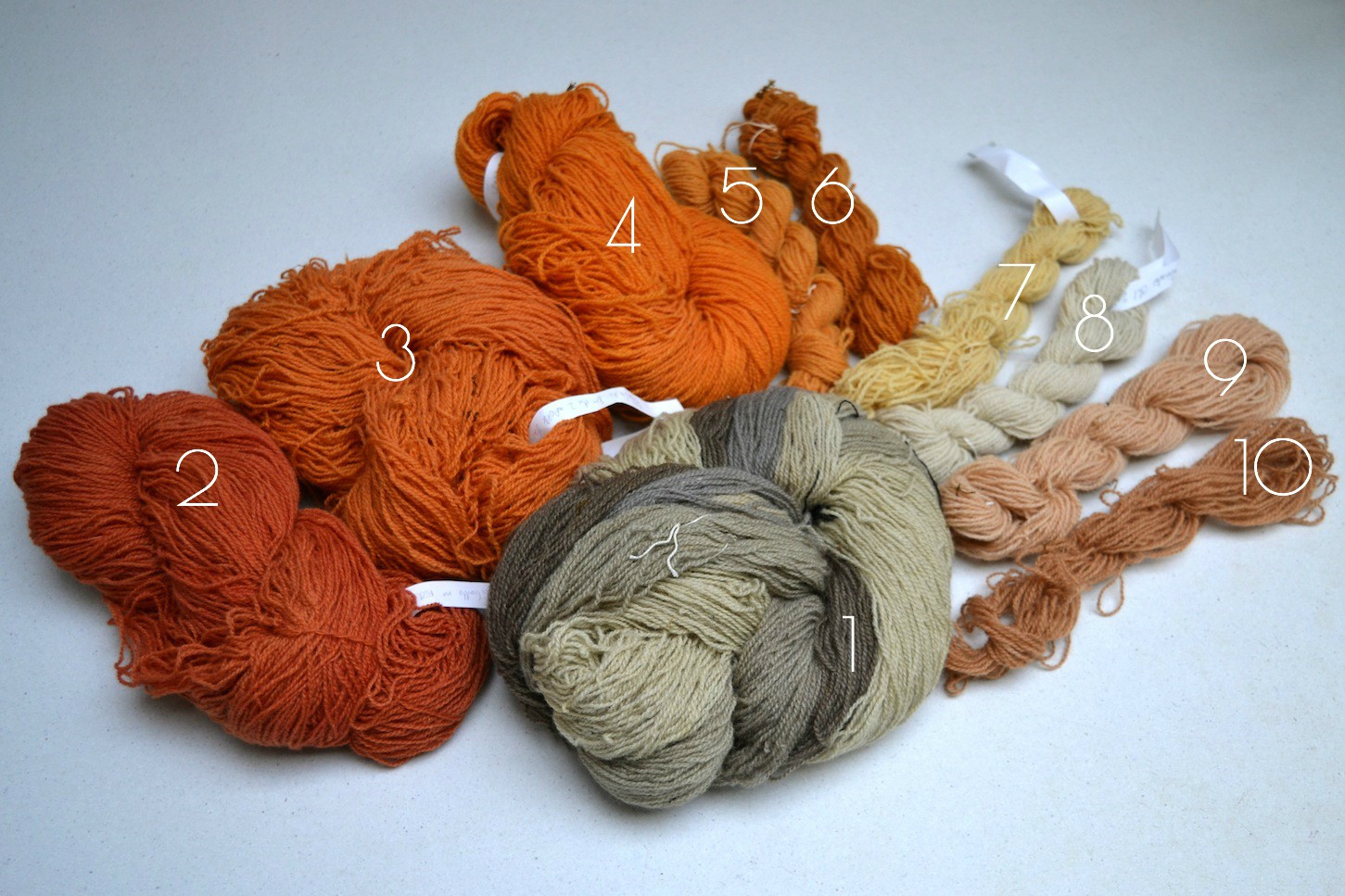
It’s interesting to compare with my 2015 harvest which gave more pink and brown.
In 2016, there were so many velvet pax mushrooms, which is a species that peaks early in the season. Then, not much else emerged for the rest of that year. It just became too dry later in the summer and fall. In 2017, it was the other way round. I only found a few velvet pax, but conditions were good later in the year.
I found a lot of Cortinarius mushrooms in 2017, part of them were Cortinarius semisanguineus:
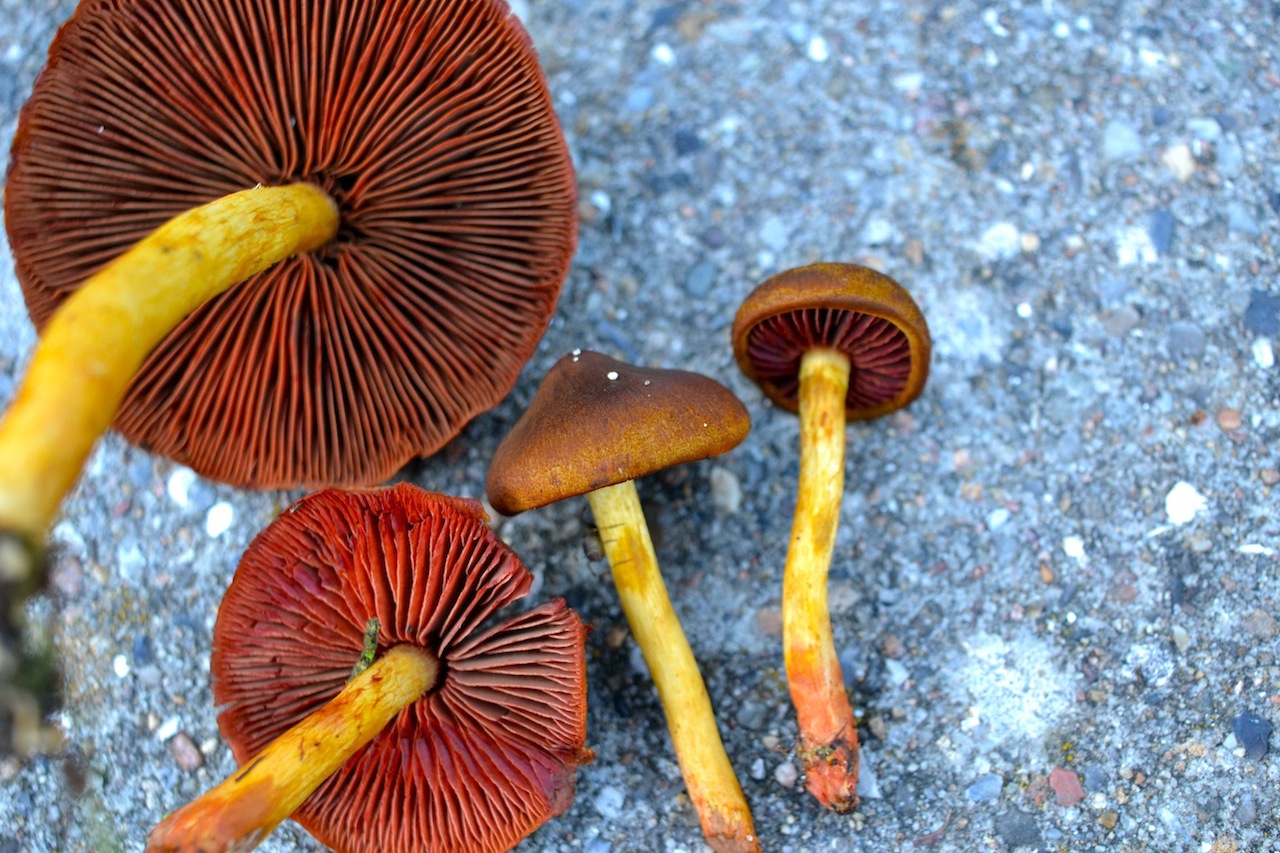
I’ve found this very good dye mushroom before. In 2014 and 2015, I dyed series of pinks with very good light fastness. So getting skein number 2 in the photo at the top – a tomato red – was a bit disappointing.
I’m quite sure, though, that this is the very same mushroom. Many Cortinarius species are very difficult to type, but that shouldn’t be the case with this one. It has some characteristics that are unique, such as the red coloration at the base of the stalk (and, of course, the red gills).
So why didn’t I get the same color as before? Asking around, someone told me that the dye is pH sensitive, but I’ve only ever dyed with Cortinarius semisanguineus without controlling pH. The mushrooms that gave pinks were picked in the northern part of Denmark, on very sandy soil. This time, I picked them further south, in a forest that was previously part of the extensive heath in these parts. Maybe the explanation is to be found in the soil?
Another Cortinarius species that was abundant in 2017 is this one, I think it’s Cortinarius malicorius:
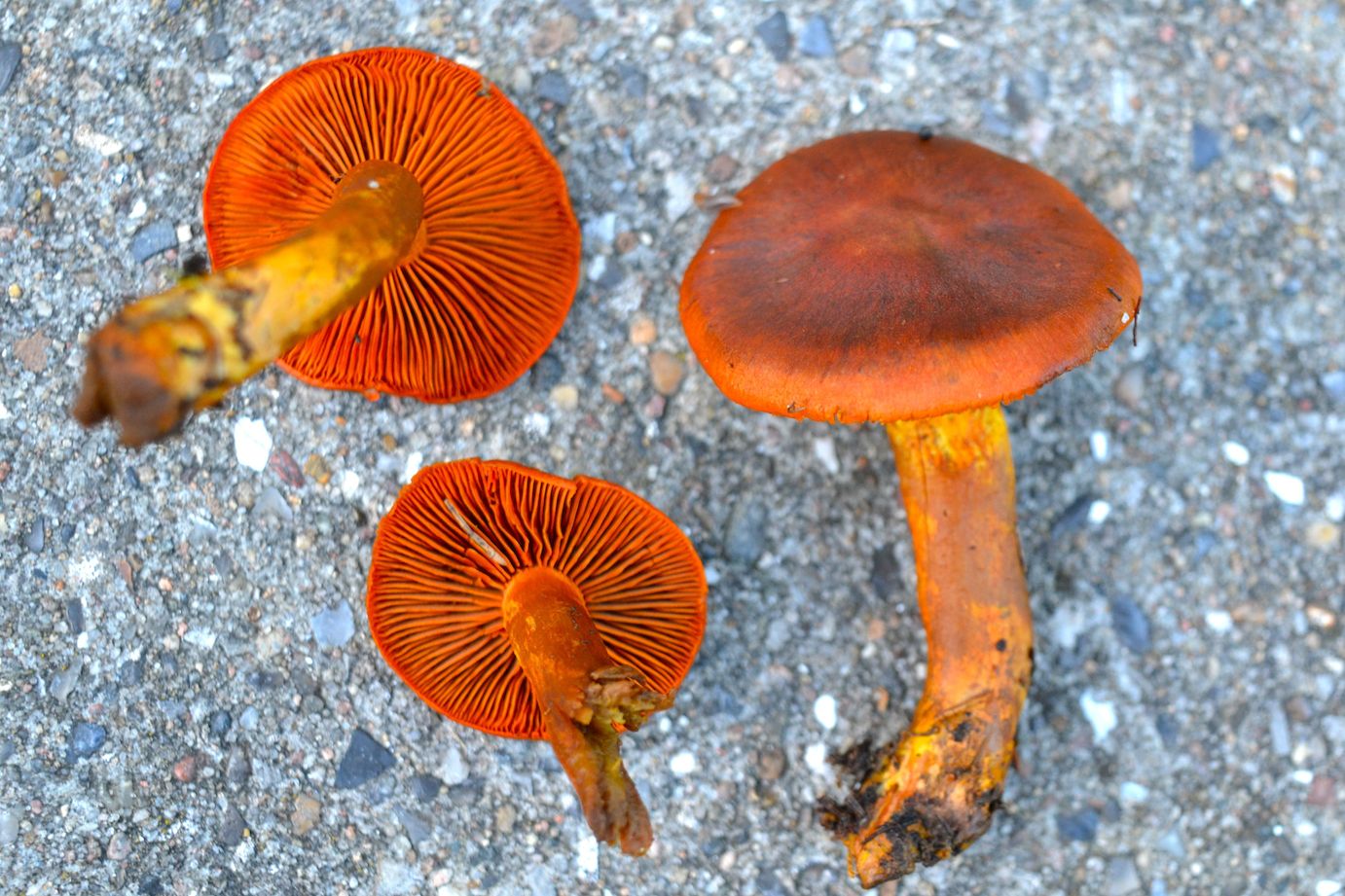
This orange mushroom also dyes orange – skeins 4, 5, and 6 in the photo at the top. These colors are a good match for the ones that Riihivilla gets from Cortinarius malicorius.
Below, the reds and oranges from my Cortinarius mushrooms can be seen in a closer view. The skein at the back of the photo is dyed with the afterbaths of both C. semisanguineus and C. malicorius. After use, I mixed them and let the whole thing ferment for some days. The resulting color is an orangey red, right between the colors from the individual mushrooms.
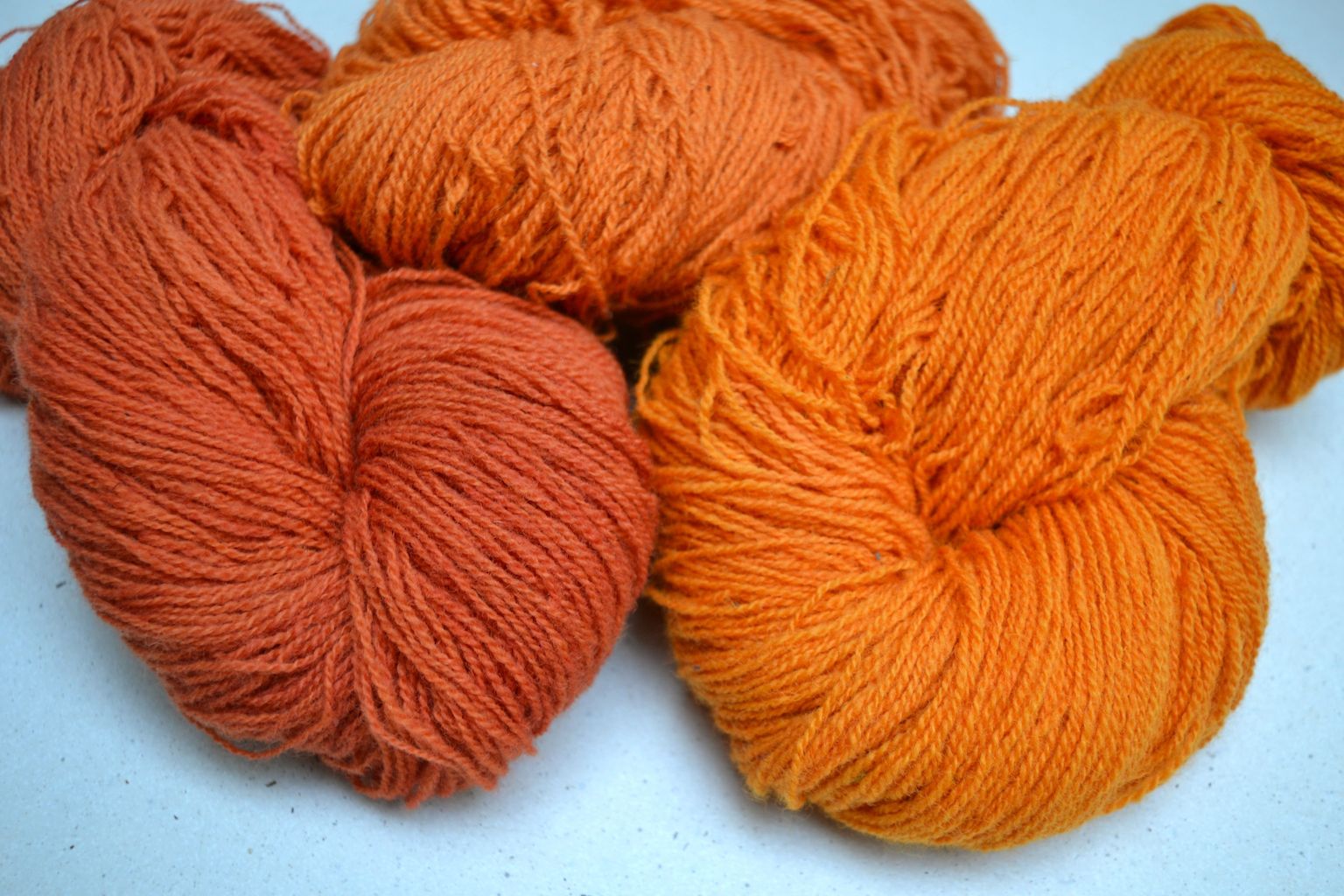
Then, on a walk in the beginning of October, I found this beauty growing in the middle of the forest road:
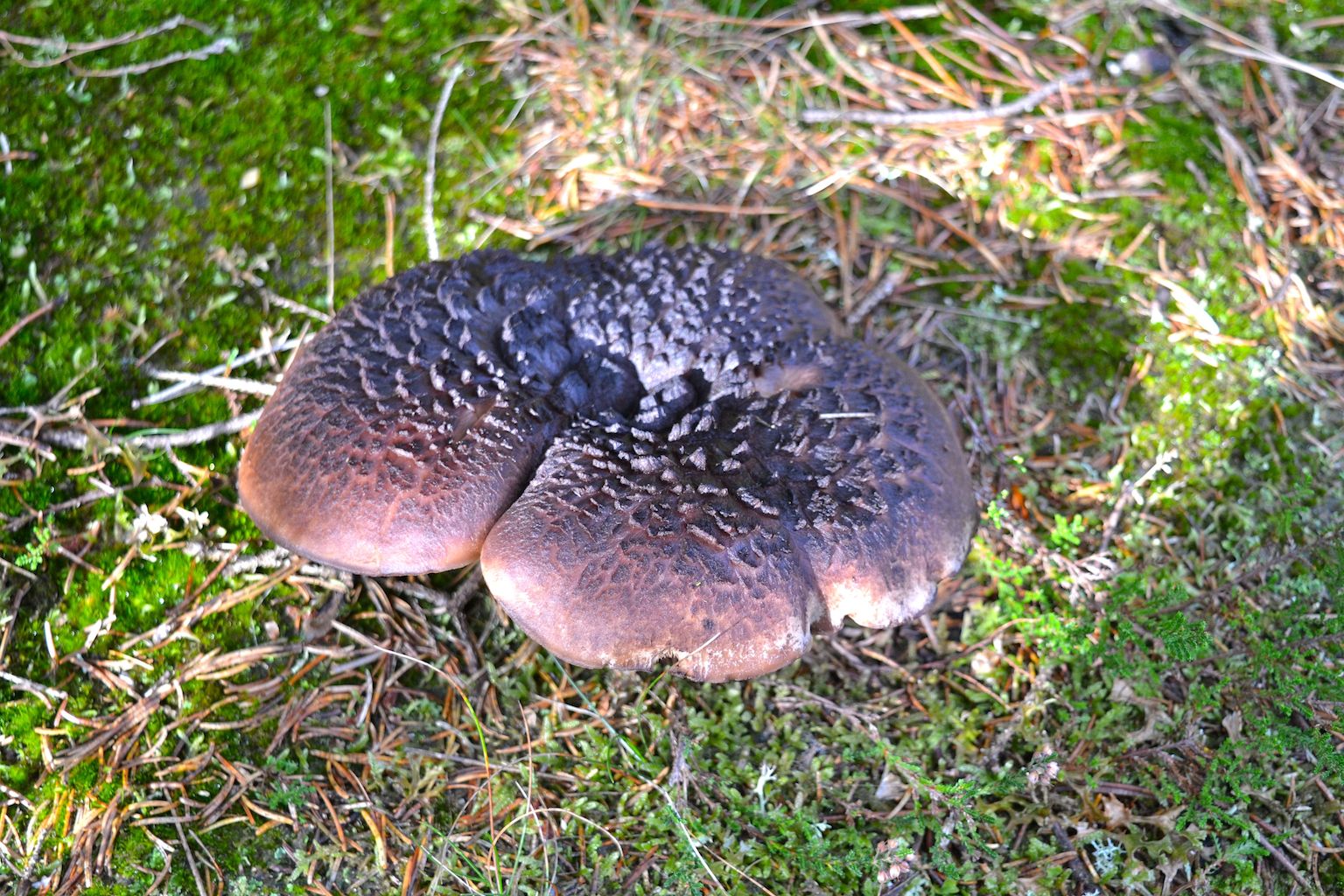
I seemed to remember something similar in my mushroom dye book (the Swedish book by Lundmark & Marklund), so I flipped it:
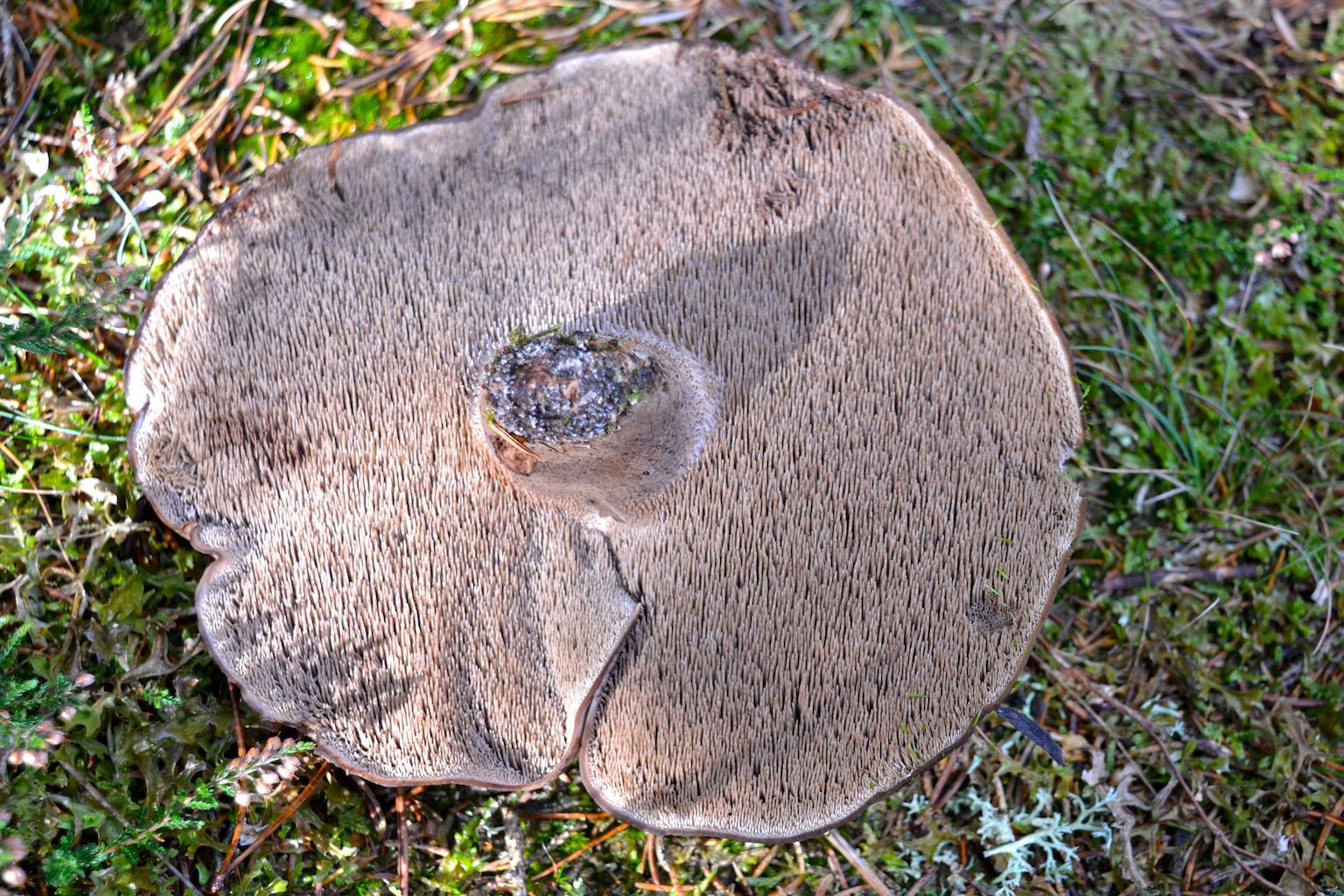
Home again, I managed to find this mushroom’s entry in Lundmark & Marklund. It’s a scaly hedgehog (Sarcodon imbricatus). Unfortunately, this mushroom is rare here in Denmark, but not in Sweden, where Lundmark & Marklund are.
Rare mushrooms obviously should not be picked, but since I already did, I might as well test it as a dye. The result was skein 8 in the photo above. Off white. So not a dyer.
I do find comfort in the fact that this mushroom was growing in the middle of the forest road. It might as well have been kicked over by children or whoever else it is doing this (why?). And I wish that the Lundmark & Marklund book wasn’t so heavy. Had I carried it with me, I’d have left the mushroom in place.
Finally, I found a good amount of this mushroom, I think it’s the polypore Ischnoderma benzoinum (which seems not to have an English name, but in Danish it’s gran-tjæreporesvamp, in Swedish sotticka):

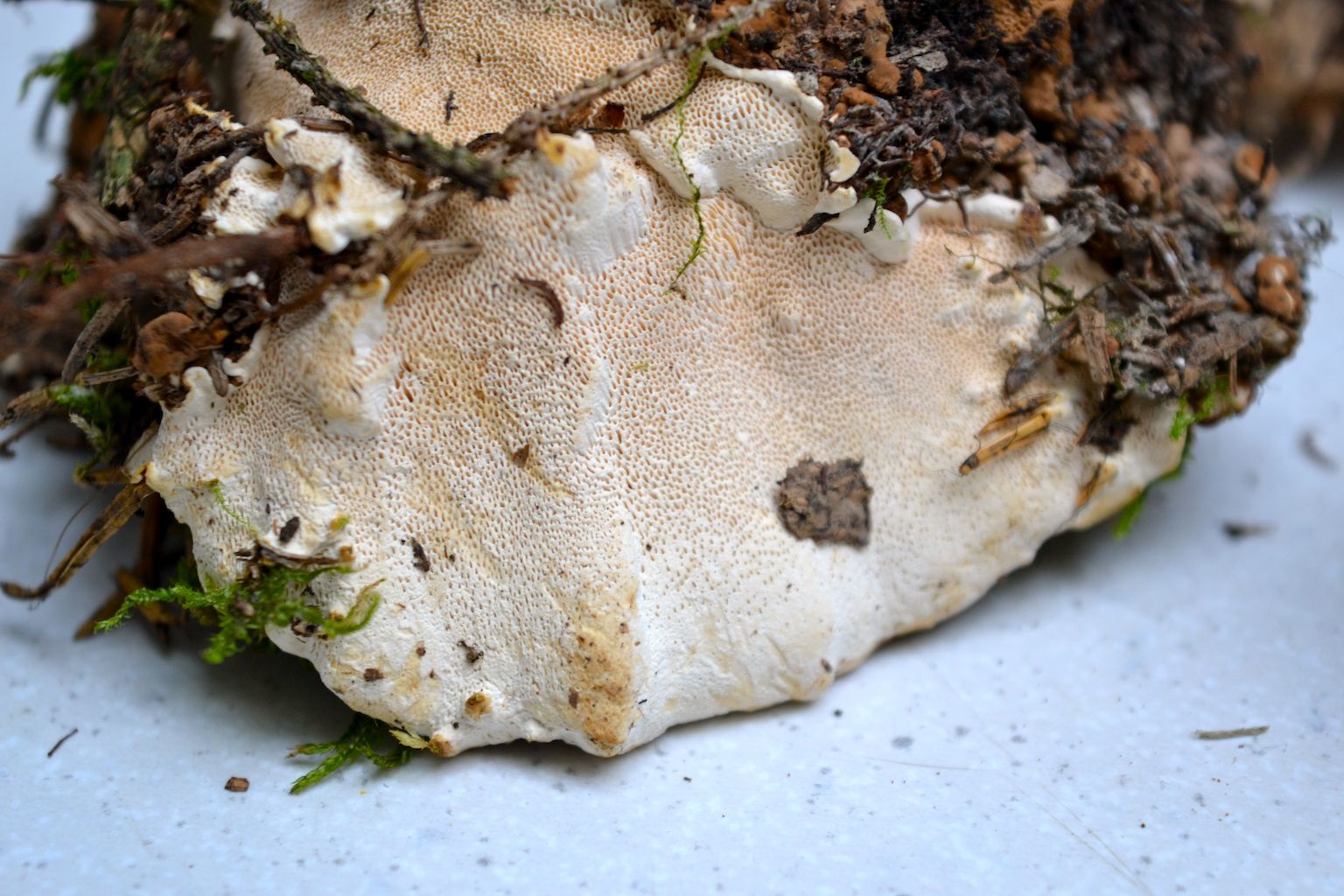
I had collected a good amount of this mushroom, weighing 130 g dry. They were stone hard, so I soaked them in water overnight, then easily cut them in pieces.
In Lundmark & Marklund’s description of I. benzoinum, it says to cut the mushroom in pieces before drying, and that fits well with what I saw. But it also says that 200 g of dry mushroom gives a good, brown color on 1 kg of yarn. My 130 g only gave red-browns on two small test skeins of 12 g each (skein 9 and 10 in the top photo). This somehow gives me the feeling that this is a different mushroom entirely…
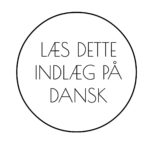
How Nice to see your mushroom dyes!
Sarcodons are also ph sensitive – a higher ph is needed to get the coveted blues.
Your polypore is most likely a Heterobasidion species, not the Ischnoderma, which is much softer when fresh, and it oozes drops as well.
Hi Else, I’m sorry I didn’t see your comment before now! I looked up your suggestion in my big mushroom book, and the only Heterobasidion mentioned is H. annosum, which it says is very common here. From the description, it’s a very good match! So thank you very much!!